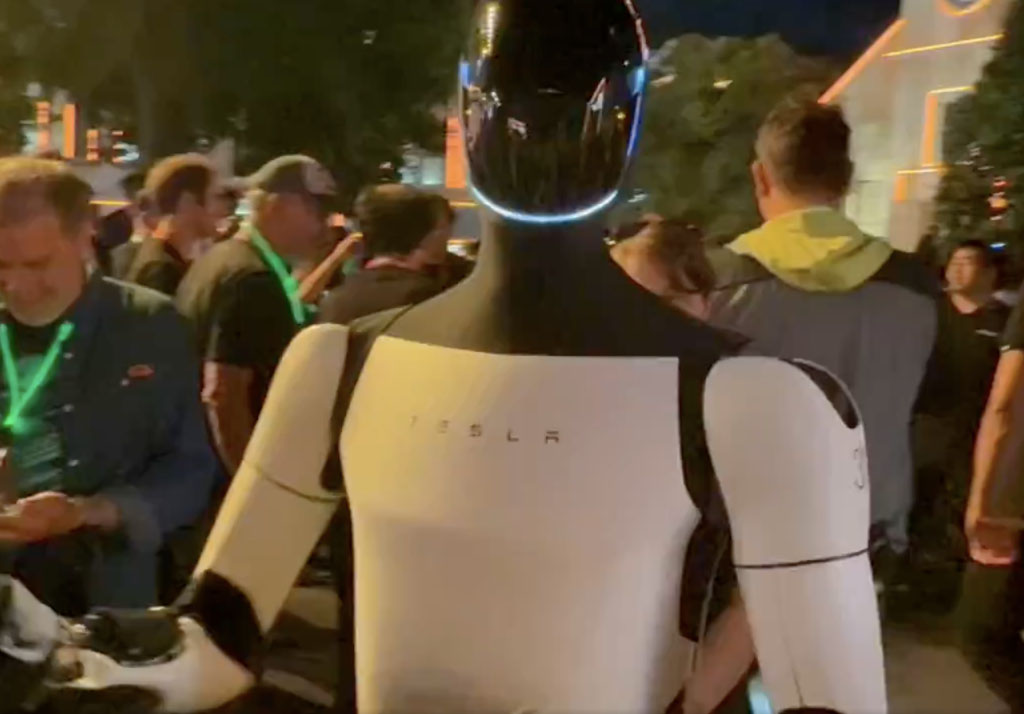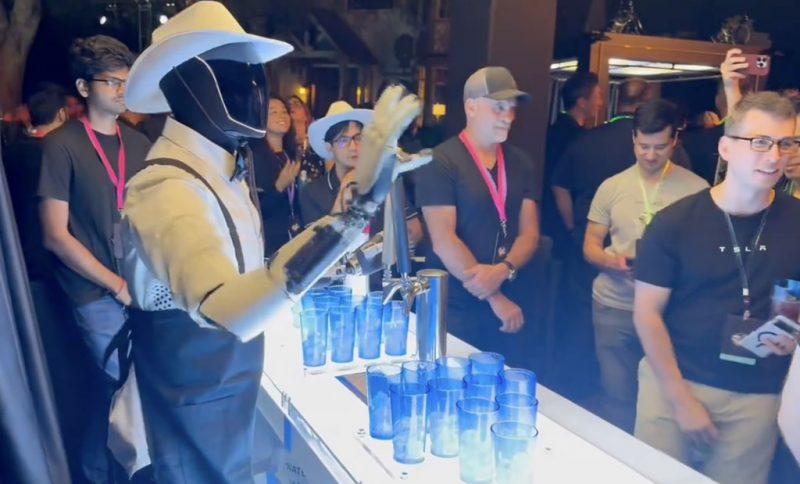
Could The Truth Behind Tesla’s Optimus Robots be More Hype Than Autonomy?
Tesla’s Cybercab event in Los Angeles was supposed to be all about innovation. With the unveiling of the highly anticipated robotaxi and robots pouring drinks at the afterparty, Elon Musk once again captured the attention of tech enthusiasts. However, a closer look at Tesla’s Optimus robots revealed something surprising—these “autonomous” machines may not be as self-sufficient as they seem.

Are Musk’s Optimus Robots More Show Than Substance?
Musk has a track record of dazzling crowds with flashy tech demos, but questions about whether his products live up to the hype persist. At the recent event, attendees were wowed as the Optimus robots danced, talked, and even mixed drinks. Videos from the event spread across social media, making it seem as though Tesla had truly brought autonomous robots to life.
IS YOUR COMPUTER SECURE?
FREE Malware Removal
Detect & Remove Adware, Viruses, Ransomware & Other Malware Threats with SpyHunter (FREE Trial)
IS YOUR COMPUTER SECURE?
FREE Malware Removal
Detect & Remove Adware, Viruses, Ransomware & Other Malware Threats with SpyHunter (FREE Trial)
IS YOUR COMPUTER SECURE?
FREE Malware Removal
Detect & Remove Adware, Viruses, Ransomware & Other Malware Threats with SpyHunter (FREE Trial)
Yet, Robert Scoble, a well-known tech evangelist, asked the important question: How autonomous are these robots? His discovery revealed a different reality.
Remote Assistance Behind the Curtain
Scoble’s questions to the robots confirmed that humans were helping control them remotely. In a video he shared, Scoble asked Optimus, “How much of you is AI?” The robot’s evasive response—“I can’t disclose just how much”—was a red flag. If these robots were fully autonomous, you’d expect them to proudly showcase their capabilities. Instead, they struggled to answer, suggesting they’re far from truly independent.
When Scoble pressed further, the robot admitted there was “some” AI involved, but the uncertainty highlighted the gap between the impression Musk gave and the actual technology in play. Later, Scoble clarified via Twitter that when Optimus walked, it was powered by AI. Still, he admitted there was more human intervention than most people realized.
Optimus make me a drink, please.
This is not wholly AI. A human is remote assisting.
Which means AI day next year where we will see how fast Optimus is learning. pic.twitter.com/CE2bEA2uQD— Robert Scoble (@Scobleizer) October 11, 2024
The Illusion of Autonomy
The event’s location—Warner Bros. Studios—adds to the sense that Musk was using a bit of “movie magic.” This isn’t the first time Tesla has faced scrutiny over its robotics demonstrations. Back in January, Musk was caught fudging a video where Optimus appeared to fold a shirt. Sharp-eyed viewers noticed a human’s hand waving in the background, showing that the robot was mimicking, not autonomously completing the task.
I asked. pic.twitter.com/FkgPrdRlyW— Robert Scoble (@Scobleizer) October 11, 2024
Many observers left the event thinking Tesla’s robots were cutting-edge, but the truth is far less impressive. While some competitors are advancing AI-powered robots without human assistance, Musk’s robots are still reliant on teleoperation—something many expected Tesla to have surpassed by now.
Tesla’s Optimus Robots Could be A Long Road Ahead
Elon Musk spoke at the event about the robots eventually being able to do household tasks like mowing lawns and shopping for groceries. But those tasks require genuine AI autonomy. The idea of a human controlling these robots remotely raises a critical question: If robots need a person behind the scenes, what’s the advantage over just hiring a human?
Musk also claimed that Optimus robots would eventually cost between $20,000 and $30,000, and boldly stated that Optimus would be “the biggest product ever of any kind.” Yet, the reality is that Tesla is far behind in robotics compared to competitors, and it’s difficult to see how these claims will come to fruition without significant technological advancements.
Separating Fact from Fiction
Elon Musk is a master of building excitement around Tesla’s innovations. But when it comes to his Optimus robots, the hype doesn’t match the reality. The robots shown at Tesla’s Cybercab event were impressive on the surface, but their reliance on human operators reveals that we’re still far from the fully autonomous future Musk envisions.
As more companies enter the robotics space, the question becomes: Can Tesla catch up? For now, Optimus seems more like a Hollywood prop than the breakthrough Musk promised. It’s a reminder that, sometimes, the future Musk talks about is still just that—the future.